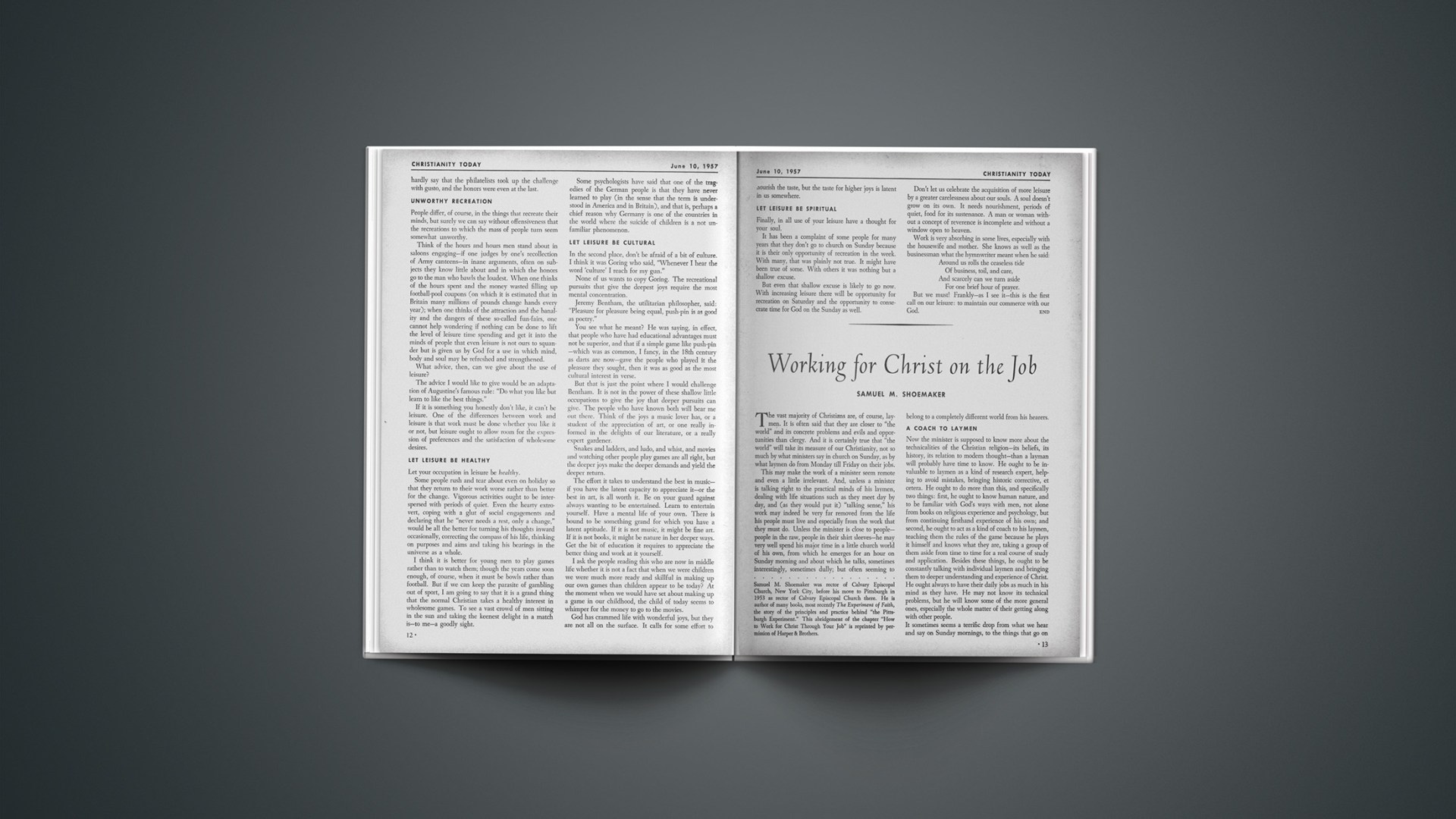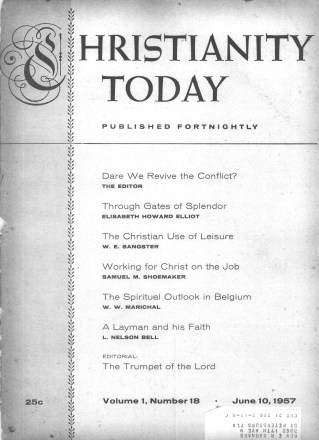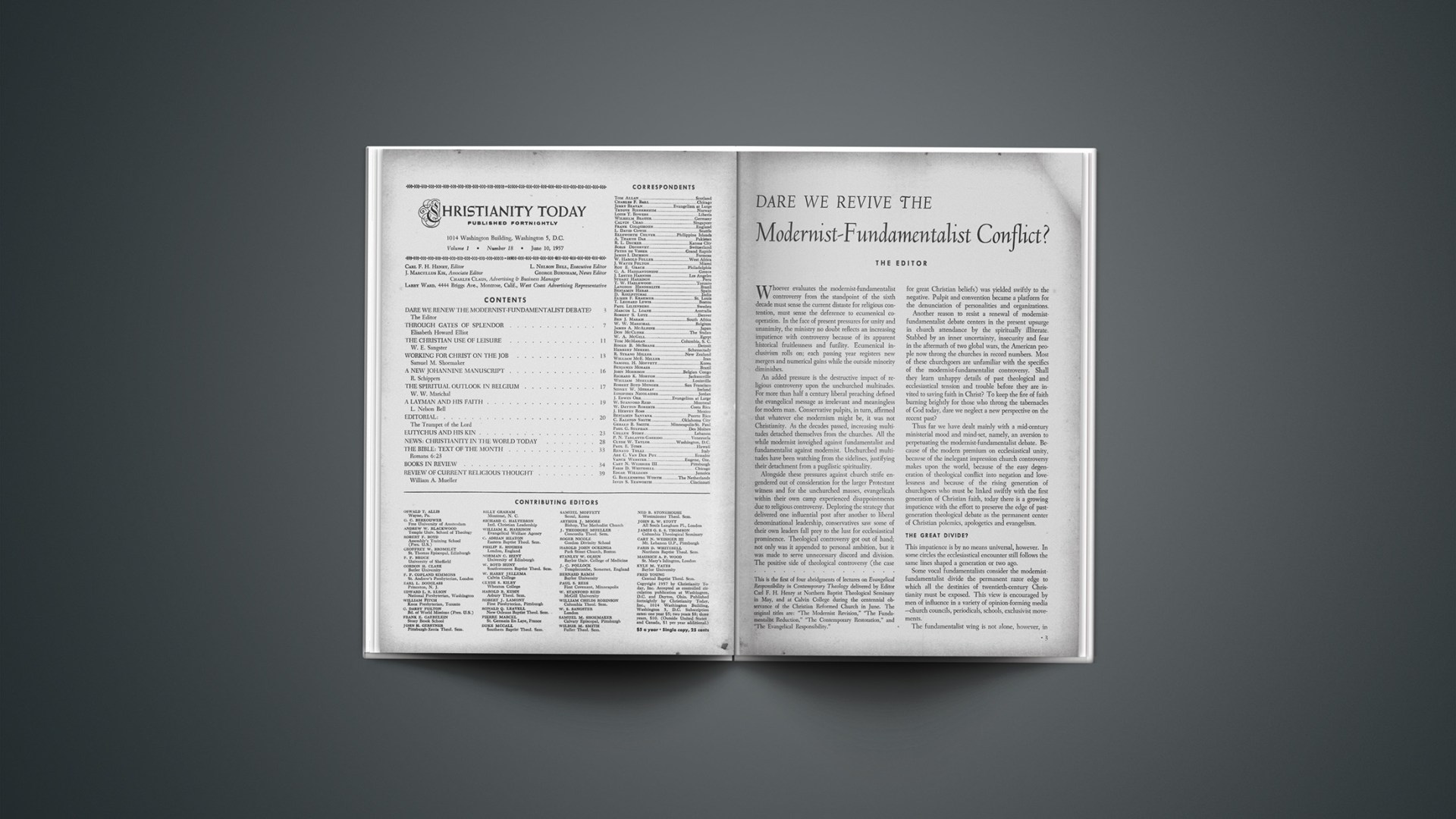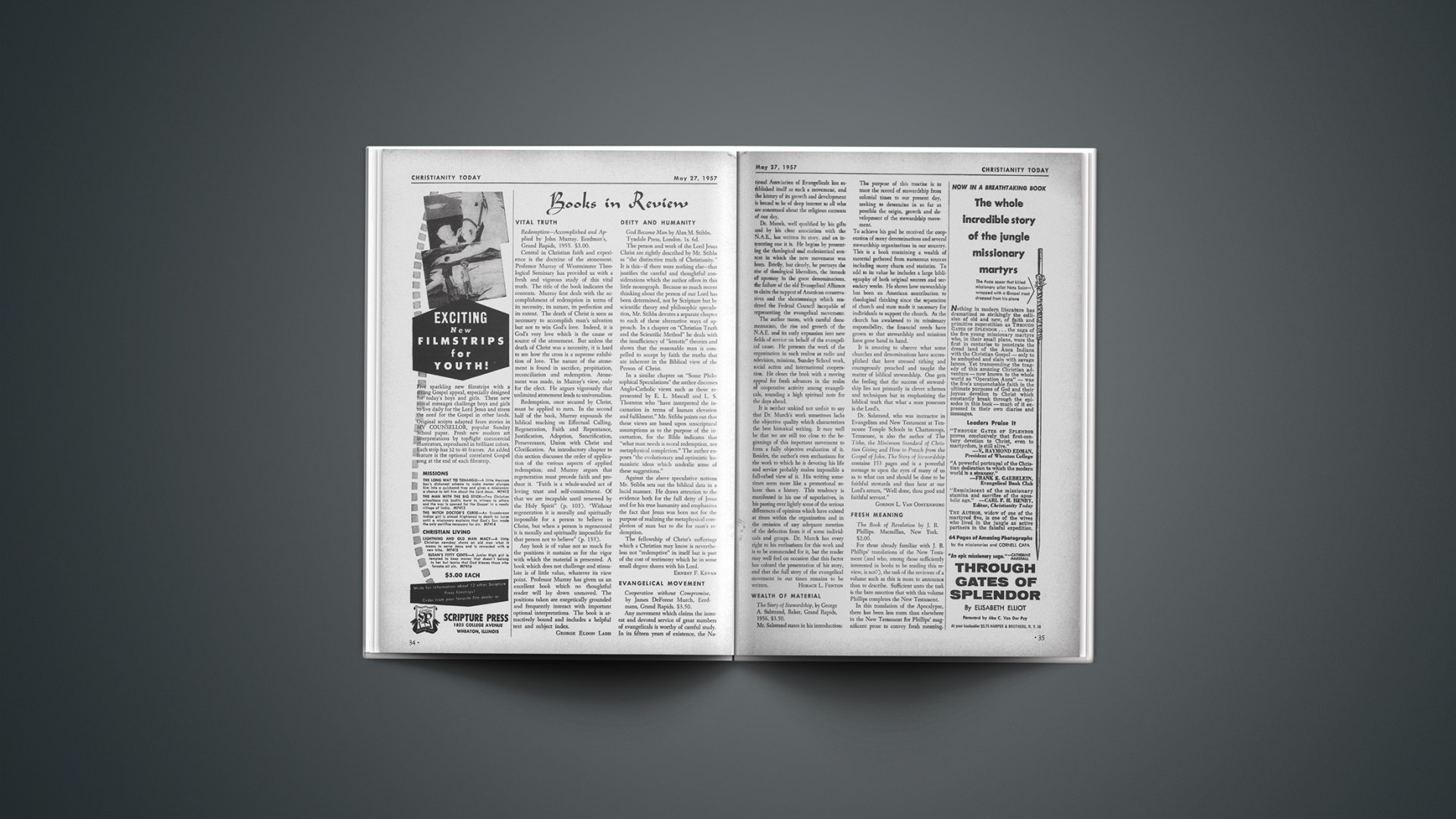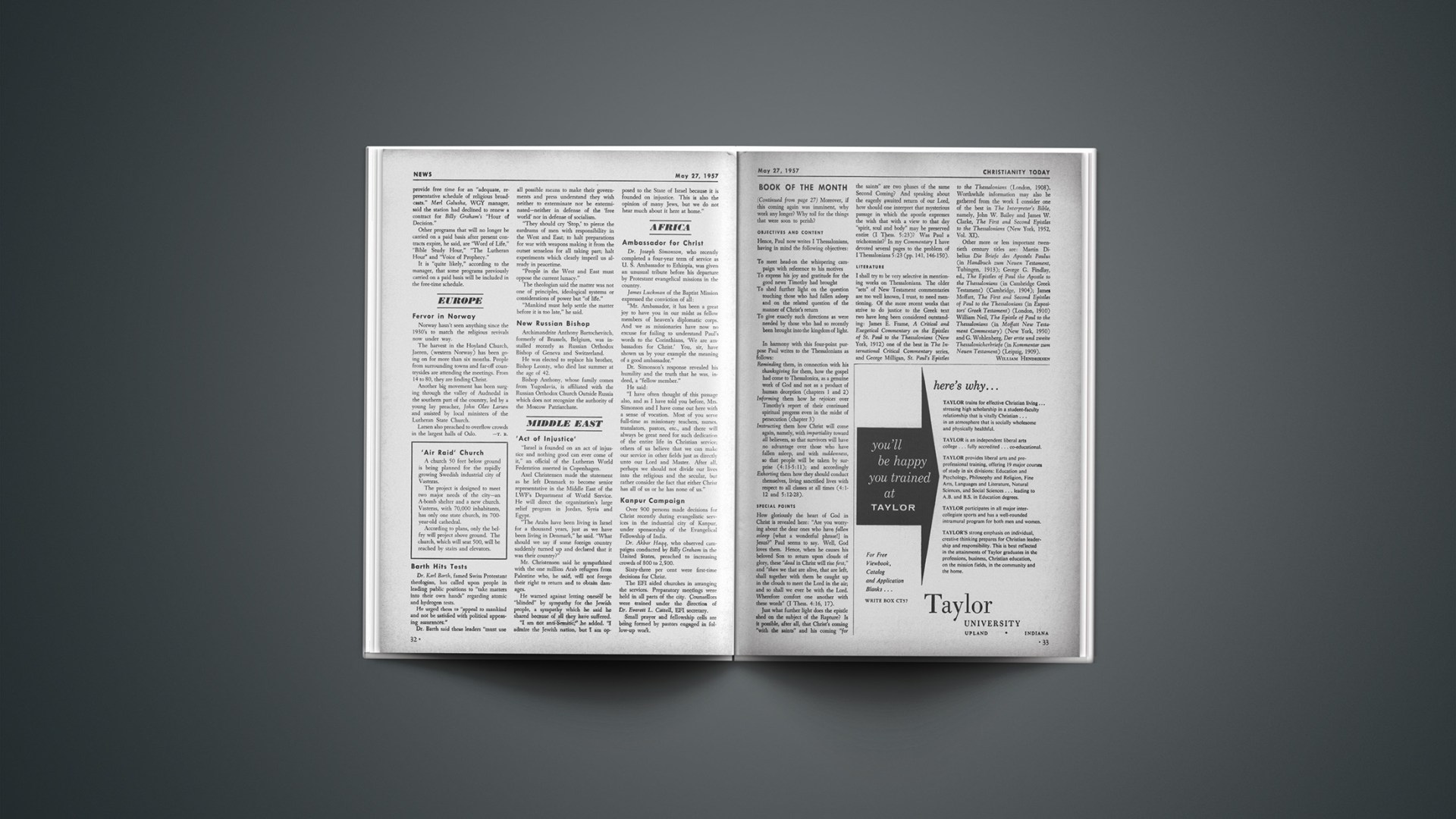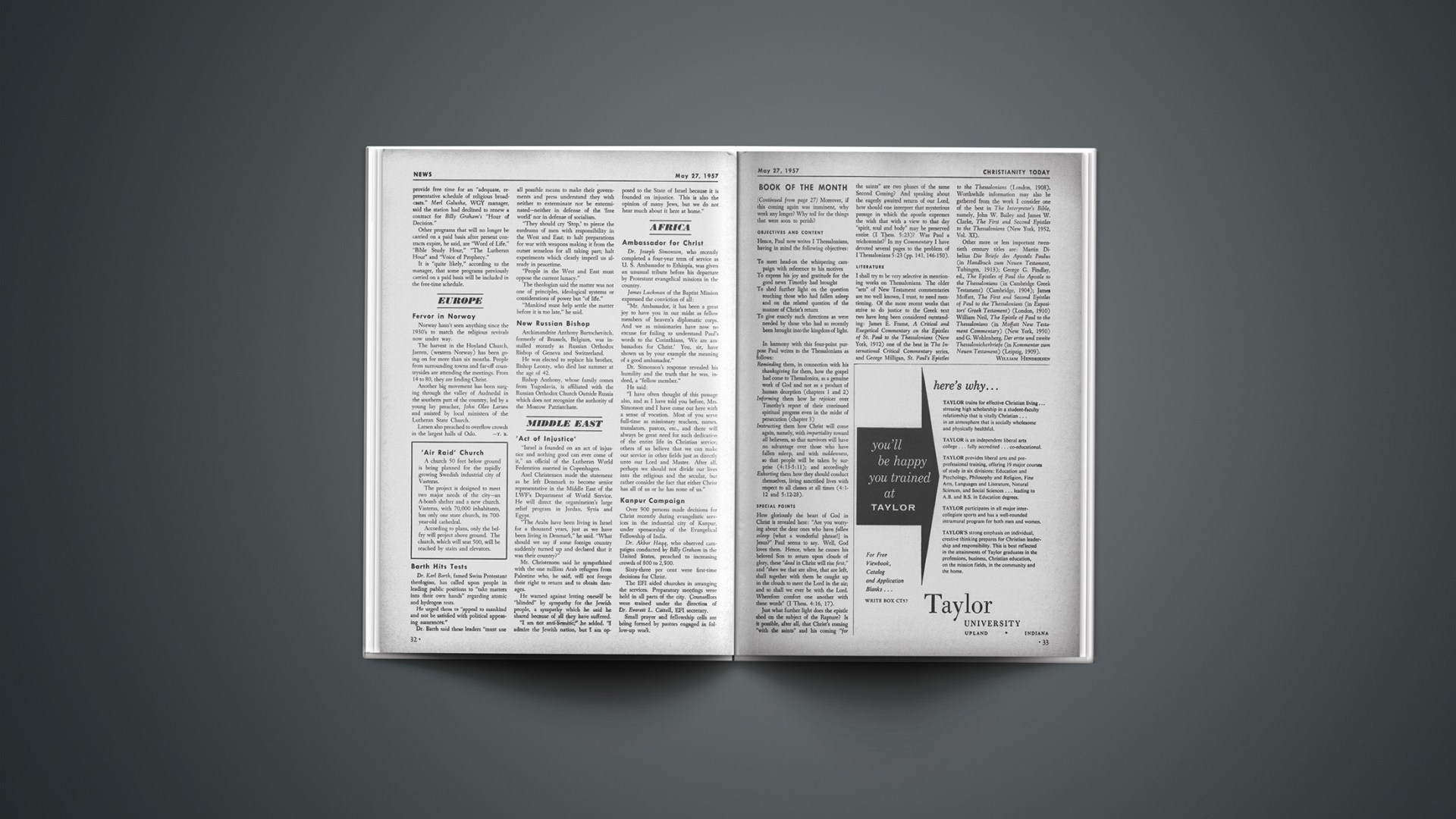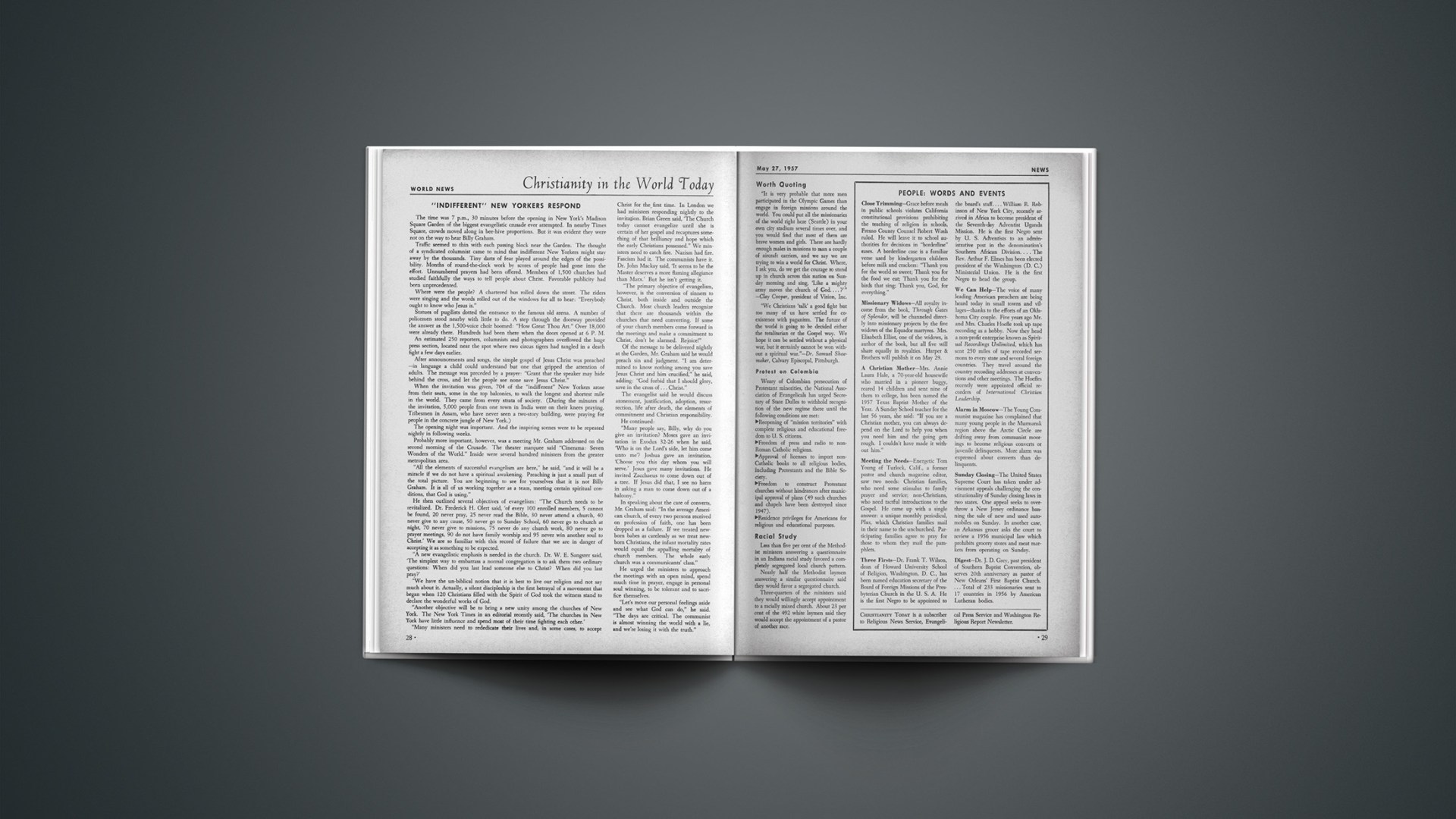The vast majority of Christians are, of course, laymen. It is often said that they are closer to “the world” and its concrete problems and evils and opportunities than clergy. And it is certainly true that “the world” will take its measure of our Christianity, not so much by what ministers say in church on Sunday, as by what laymen do from Monday till Friday on their jobs.
This may make the work of a minister seem remote and even a little irrelevant. And, unless a minister is talking right to the practical minds of his laymen, dealing with life situations such as they meet day by day, and (as they would put it) “talking sense,” his work may indeed be very far removed from the life his people must live and especially from the work that they must do. Unless the minister is close to people—people in the raw, people in their shirt sleeves—he may very well spend his major time in a little church world of his own, from which he emerges for an hour on Sunday morning and about which he talks, sometimes interestingly, sometimes dully; but often seeming to belong to a completely different world from his hearers.
A Coach To Laymen
Now the minister is supposed to know more about the technicalities of the Christian religion—its beliefs, its history, its relation to modern thought—than a layman will probably have time to know. He ought to be invaluable to laymen as a kind of research expert, helping to avoid mistakes, bringing historic corrective, et cetera. He ought to do more than this, and specifically two things: first, he ought to know human nature, and to be familiar with God’s ways with men, not alone from books on religious experience and psychology, but from continuing firsthand experience of his own; and second, he ought to act as a kind of coach to his laymen, teaching them the rules of the game because he plays it himself and knows what they are, taking a group of them aside from time to time for a real course of study and application. Besides these things, he ought to be constantly talking with individual laymen and bringing them to deeper understanding and experience of Christ. He ought always to have their daily jobs as much in his mind as they have. He may not know its technical problems, but he will know some of the more general ones, especially the whole matter of their getting along with other people.
It sometimes seems a terrific drop from what we hear and say on Sunday mornings, to the things that go on during the week downtown. Some laymen have accepted this gap completely, and become fatalistic about it. Worship is for them a kind of escape from the worries of mundane life into the upper ether of the ideal. Surely we need to bring our lives back again and again, in worship, to the perfection and love and grace of God; but having received from Him there, we should certainly return to Monday morning with more hope and love and prayer and expectation in our hearts than many of us have. We seldom hear sermons directed at the daily job, and sometimes when they are, they don’t hit the mark. So we have separated Sunday from the rest of the week, thereby doing no service to make Sunday more “spiritual”—only more remote—and leaving the daily job as if it were a hopeless “necessary evil” to make a living with which to care for the family.
The first thing we need is some new thoughts about the practicalities of daily life in relation to our religion. We often behave as if God were interested in religion, but not in life—in what goes on in church, but not in what goes on in a mill or a farm or a broker’s office. This point of view overlooks something. It forgets that Christianity began, not when religion got carried farther up into the skies, but precisely when it was brought “down to earth.” It has often been called the most materialistic of all religions, because it is constantly concerned, not with a God above the skies, but with a God who came to earth and lived here. “And the Word was made flesh, and dwelt among us, and we beheld his glory.…” That’s where Christianity begins and where it must always look to set its sights aright. Some of us are seeking after a false spirituality: we might almost better seek after a true materialism, in the sense of a better interpretation of the business and politics and industry on which most of our waking hours have to be spent.
Using Things For God
As Christians, we are not called to leave behind us the body, money, work, amusements, statecraft: we are called upon to redeem these things by using them for God. Unless we hear this kind of teaching in churches, we are not hearing an authentic preaching of the religion of the Incarnation—which means the enfleshment of the Son of God. Jesus’ coming into the world has forever banished the idea of the incompatibility of material with spiritual things. They are not the same, of course, and materialism without God is pure paganism. But letting God into the material is something quite different. I say it without hesitation: there is nothing more “spiritual” or holy about going to church than about going to the office, if you go to both places to serve and obey God.
But how is this spiritualization of the material to come about? Business is so vast, so impersonal, so hard at times—where shall anything spiritual take hold, or seem other than a sentimental intrusion? If anything is to happen, to Christianize business, it must concern, first, the changing of the individuals who are part of the business scene, in some of their basic attitudes and beliefs; and, second, it must manifest to them that there can be a different kind of human relations in business, and that this is the primary situation where God enters the picture of business.
Extension Of Conversion
Our first need, then, is to let our conversion extend to our job. We cannot close this gap between “God” and “the world,” but we can lessen it. There is no use in our saying we are even attempting to be “converted” when we live as if our faith and our job were in two irreconcilable compartments. Much nonsense has been talked during the last seventy-five years about the need for a “social gospel” as well as a “personal gospel.” Christ made no such distinction. But it certainly did not occur to him to stay up on the Mount of Transfiguration with Peter, James and John where they had had a transcendent spiritual experience together, when, down at the foot of the mountain there was a boy in an epileptic fit who needed to be healed. One wonders whether the openness to God which made the Transfiguration possible on the top of the mountain was not also the identical openness to men which made the healing possible at its base. Jesus surely hated slavery, and political injustice as practiced by Rome. However, he seems to have said little about them, but instead to have released forces that would one day effect the reform he wanted to see. We can’t talk pious on Sunday and then treat our employees or our boss like objects and obstacles during the week. We cannot have the kind or relations some of us have on a spiritual level with our colored friends, and then run up a practical barrier that excludes them as if they were inferior to ourselves. We cannot profess Christ on Sunday, unless we are willing to let that profession get down into the bones of weekday practice. The least we can aim for is common justice. Yet many Christians dare not raise their eyes and look at the actual situations—bad housing, poor pay, inadequate recreational facilities—which they tolerate and even profit by. The conversion must extend to the job, or else it will wither. “If a man love not his brother whom he hath seen, how can he love God whom he hath not seen?”
A New Motivation
The second thing that can happen is: God can give us a new motive for business. To be sure, we must be practical and realistic concerning “profits,” for unless a business is successful enough to be making money, it cannot meet its own payroll, let alone anything due to investors. Making things, selling them, and receiving money for them, is of the essence of business. Do no let us fool ourselves here: schools sell education, hospitals sell health, churches sell faith, and all of them—however noble their motives—are in some sense in business. They must exist in a practical world where we find ourselves all together and all interdependent. But the things we sell may have a very true value to the person who buys it, and it may be a real service to him that we make it available. No man ought to market anything he knows is inferior to what he says it is. We can put honesty above sales.
Pursuit Of General Justice
A third thing which can happen is that an individual, or group of individuals, can go to work to establish more of what may be called general justice. We have already seen how one young man, convinced about his Christian faith, started to change the practice of one smaller company in relation to the employment of members of another race. Manifestly, justice demands that in a free and democratic society a qualified person should be given a chance to do any work of which he is capable, without regard to religion, color, or anything else that differentiates him from the majority or from the ruling group.
A fourth thing that every individual can do is to release a new spirit in an office or business. We all know what a wrong spirit can do.
Teaming Up For Christ
A fifth possibility is starting a group within the company. A man’s influence is not doubled, it is multiplied, when he gets into fellowship with another man, and they pray, and feel their way with God and act. Start praying for a spiritual teammate. Get into solid fellowship with him. Draw in one or two or more as it seems guided. Soon there will be a nucleus with which God can begin doing business in the company.
There seem to be three natural steps in such work: first, the enlisting of the interest of an individual; second, the manifestation of a new attitude on his part toward people; and third, the winning of people to Christ and his program.
Making Business Christian
I believe business is meant to be a channel of God’s power, the main and chief extension of the church in the world. God may never have any other access to certain people except that one who believes in him happens to work alongside them. When they see peace, poise and power they will become curious and be persuaded that religion is not a “racket,” but a source of light. Obviously, life and deeds have to precede words—the life and deeds, not of a great and mature saint, but of a sinner who has quit bluffing and is trying to do what God wants him to do. The spiritual opportunity that confronts a man in any kind of job whatever is unlimited, if he has the imagination to see it, and the courage to grasp it.
It is a very great task to attempt to make business Christian throughout, to serve God effectually on the daily job, and to make our profession or business work for God. Our daily work, like our human nature, cannot be made statistically good. No hope can come from the superimposition upon business of “systems” which sound and look good, but do not reckon with the ever-present problem of human nature. We can only hope to make real progress in the Christianizing of business by the Christianizing of the men who manage and work in it. If this is carried far enough, these men will use their freedom to obey God more fully in their business relations. I am convinced that God enters the business scene in two ways: first, through converted men and women whose hearts he has touched and changed and who carry his Spirit with them at all times; and second, in human relationships that are different because he has become third party to them. Slowly Christian persons and Christian relationships permeate the business situation. Prayer, good will and fellowship are a powerful combination. The Spirit of God uses them to change man’s mere self-interest into the wider interest of the whole. Slowly, but (under these conditions) steadily, “the kingdoms of this world become the kingdom of our Lord and of his Christ.”
A Pastor’s Sermon To Himself
A pastor must be truly great, but in humility;
Of noble bearing as of royal descent,
Yet willing to bow down to the sorrow-bent.
A sinner who with sinners has trod
The road to forgiveness after wrestling with God.
A source of strength for those who are weak,
A scholar who for truth must seek.
Never influenced by money or might,
Always defending the poor man’s right.
A beggar with outstretched pleading hands,
An ambassador who richly Christ’s substance commands.
A man at the battlefield where men are led,
A woman when he stands at a hospital bed.
Old in experience, yet young in ideas,
Reaching for the sky while crushed to his knees.
Clear in his thoughts, true to his word,
A faithful servant to his Lord.
Dedicated to God until he die:
O so different, so different than I.
ADAM SCHREIBER
(Translated from the German)
Samuel M. Shoemaker was rector of Calvary Episcopal Church, New York City, before his move to Pittsburgh in 1953 as rector of Calvary Episcopal Church there. He is author of many books, most recently The Experiment of Faith, the story of the principles and practice behind “the Pittsburgh Experiment.” This abridgement of the chapter “How to Work for Christ Through Your Job” is reprinted by permission of Harper & Brothers.

